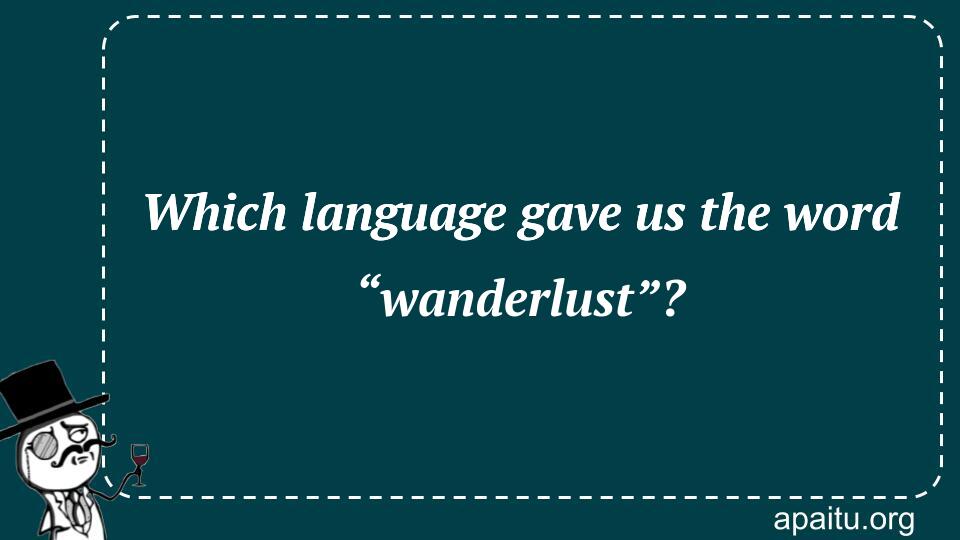Question
Here is the question : WHICH LANGUAGE GAVE US THE WORD “WANDERLUST”?
Option
Here is the option for the question :
- Latin
- French
- Italian
- German
The Answer:
And, the answer for the the question is :
Explanation:
A person is said to have “wanderlust” when they have an overwhelming yearning to see the world.

The word “wanderlust,” which has become a popular term in the English language, finds its origin in German. Wanderlust is derived from two German words: “wander,” meaning “to hike” or “to wander,” and “lust,” which translates to “desire” or “passion.” Together, these words form a compound that encapsulates the longing or strong desire to explore the world and travel.
The concept of wanderlust goes beyond mere travel or tourism. It represents a deep yearning for adventure, discovery, and the exploration of new horizons. Wanderlust is a powerful force that drives individuals to venture into unfamiliar territories, embrace diverse cultures, and seek experiences that broaden their perspectives.
Germany, with its rich cultural heritage and breathtaking landscapes, has long been associated with a spirit of exploration and wanderlust. The country’s history is intertwined with a tradition of wandering and hiking, with a well-established network of hiking trails that traverse picturesque mountains, forests, and countryside. German literature and poetry often romanticize the beauty of nature and the allure of the open road, further fueling the wanderlust phenomenon.
The term “wanderlust” gained significant recognition and popularity beyond the German-speaking world during the late 19th and early 20th centuries. This period marked a time of increased mobility, as advancements in transportation, such as the development of railways and steamships, made travel more accessible to a broader range of people. The yearning for exploration and adventure became a prevailing sentiment among individuals seeking to break free from the constraints of their everyday lives.
Wanderlust also found resonance within the context of the Romantic movement, which flourished in Europe during the 18th and 19th centuries. Romanticism celebrated the beauty of nature, the sublime, and the individual’s emotional connection to the natural world. The wanderer, often portrayed in Romantic literature and art, embodied the spirit of wanderlust, embarking on journeys of self-discovery and immersing themselves in the magnificence of the natural environment.
In the modern era, the term “wanderlust” has become a cultural phenomenon, embraced by individuals who crave adventure, cultural immersion, and personal growth through travel. It has transcended its linguistic origins and is now widely recognized and used in various languages around the world.
The rise of social media and travel blogging has further fueled the wanderlust movement. Travel influencers and enthusiasts share their experiences, photographs, and stories, inspiring others to embark on their own journeys. The allure of wanderlust has become intertwined with the exploration of new destinations, the pursuit of unique experiences, and the quest for self-discovery.
Wanderlust has also influenced various industries, including tourism, hospitality, and fashion. Travel agencies cater to the desires of wanderlust-drive